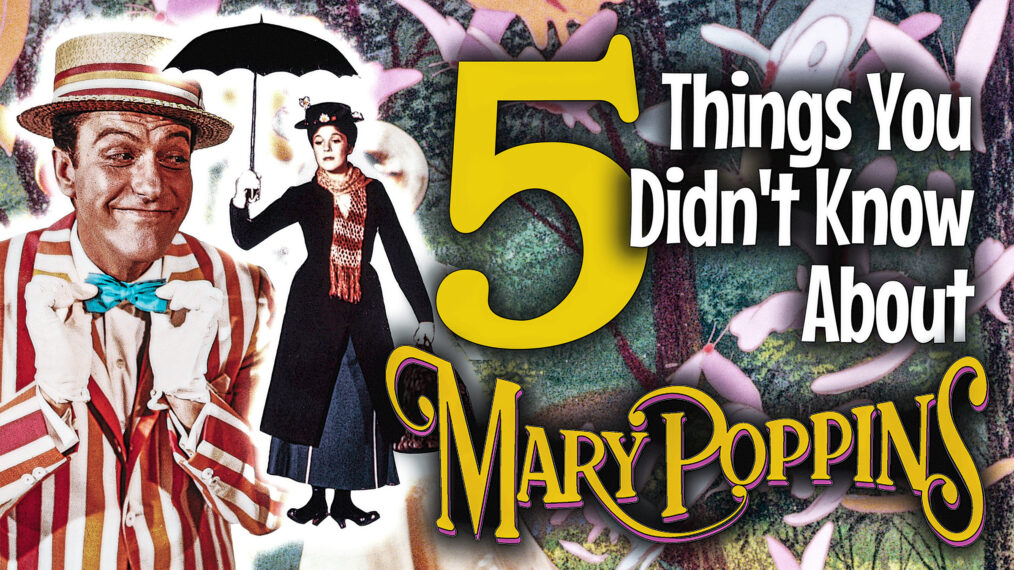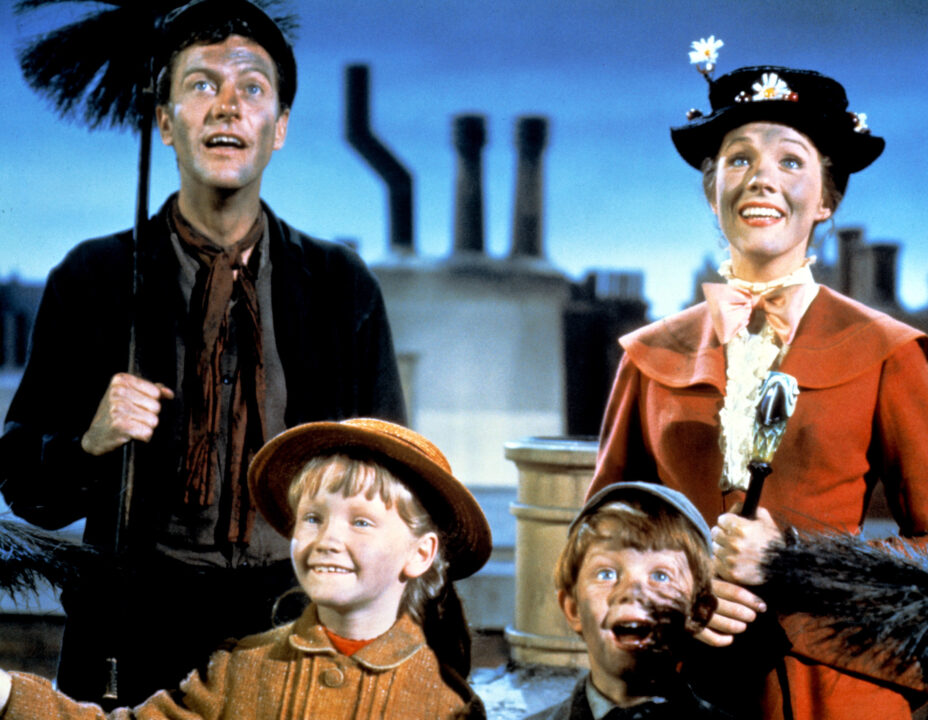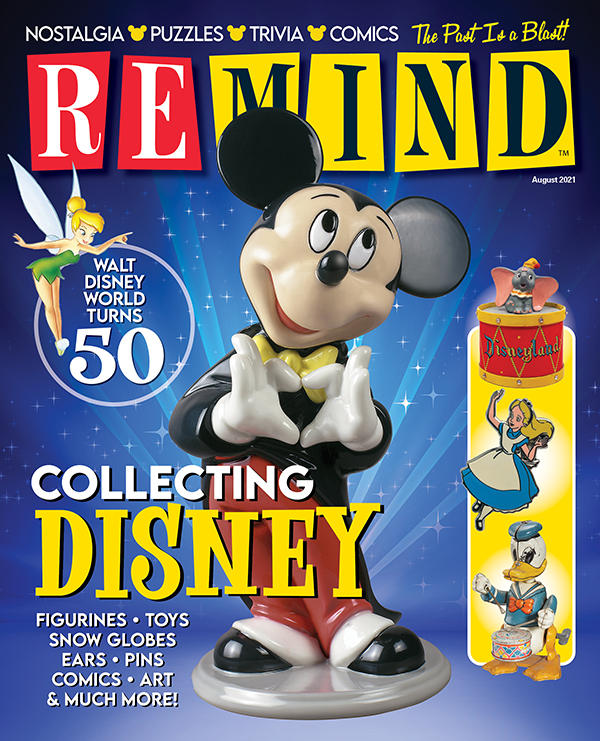‘Mary Poppins’ 60th Anniversary! 5 Things You Didn’t Know (And Some Aren’t Very Nice)

When Mary Poppins hit theaters on August 27, 1964, no one could have known what a cultural juggernaut it would become. After winning five Oscars, turning Julie Andrews into a star and British nannies into a cliche, the film remains a beloved family classic 60 years later, even spawning two recent films — 2013’s Saving Mr. Banks, a dramedy about the making of the film starring Emma Thompson and Tom Hanks, and 2018’s Mary Poppins Returns with Emily Blunt.
But the film’s backstory was not always quite so chim-chim-cheroo. Here are five surprising facts about how the world’s most famous governess made her way to the silver screen.
1The Original Books Were Darker…
Yes, Mary Poppins is based on a book! Actually, it’s based on eight books, five of which were published before the release of the film. But author P.L. Travers’ version of Mary Poppins is quite different from the stern but loving childcare professional we see on the screen. In the books, Poppins is often irritated by the Banks children, belittles them, and frequently undermines them, pretending after the fact that their magical adventures never occurred. Travers described the Poppins character in her novels as a woman who “never wastes time being nice.”
2…And the Author Hated the Movie
Walt Disney spent 14 years trying to secure the right to Mary Poppins; prior to Disney’s involvement, there had been other offers, including a tentative idea for a Mary Poppins with Katharine Hepburn that never materialized.
Travers finally agreed to a deal that gave her a cut of the film’s profits and consulting rights. And as she consulted, she was horrified by the sweet, family-friendly film that Disney was piecing together. She hated that the film made Mrs. Banks a suffragette, thought Mary was too pretty, and according to one of her former collaborators, “she hated animation more than anything else.” She also hated the film’s songs, and the romance between Mary and Bert the chimney sweep, which has no parallel in the book.

Walt Disney Co./Courtesy Everett Collection
Travers famously burst into tears at the premiere of the film — a premiere she had not initially been invited, because Disney feared that she would cause a scene. But unlike what’s depicted in the film Saving Mr. Banks, where Emma Thompson’s Travers cries at the premiere because she is moved, they were not quite tears of relief and joy. Travers later said “I cried when I saw [the film]. I said, ‘Oh, God, what have they done?'”
According to a 2005 article in The New Yorker, immediately after the premiere, Travers made her feelings known:
She tracked down Disney at the after-party, which was held in a giant white tent in the parking lot adjoining the Chinese Theatre. “Well,” she said loudly. “The first thing that has to go is the animation sequence.” Disney looked at her coolly. “Pamela,” he replied, “the ship has sailed.”
Until her death in 1996, Travers accused the film of “betraying” the books and the character of Mary Poppins.
3There Was A Supercalifragilisticexpiali-Lawsuit
Brothers Richard and Robert Sherman wrote the film’s songs, and claimed that “supercalifragilisticexpialidocious” was a word they had made up together, drawing on a shared childhood love of nonsense words.
However, in 1965, songwriters Don Fenton and Gloria Parker claimed that the word was far from nonsense — and, in fact Fenton and Parker had invented it previously, in a 1949 song. However, the suit was thrown out due to the near-impossibility of establishing copyright on a single word, especially after it was established that the word had already appeared in a 1931 issue of the Syracuse University student newspaper.
4“A Spoonful of Sugar” Was Inspired By the Polio Vaccine
One of the film’s most memorable tunes was inspired by a literal spoonful of sugar — and an unpleasant childhood medical procedure. Songwriter Robert Sherman’s young son, Jeff, feared needles, and was frightened by the idea of getting a traditional polio vaccination. However, one day at school, he was given the oral vaccine instead — with the medication placed on a sugar cube. After coming home and describing his experience to his father, Jeff said, his dad called his brother Richard immediately. The pair had been struggling to write an upbeat musical number for the film, but finally, they had their inspiration.
5Julie Andrews Actually Wasn’t the First Mary Poppins

CBS via Getty Images
Many movie studios had tried to woo P.L. Travers to get the rights to Mary Poppins before Disney, and none of them succeeded. However, one TV show did. In a 1949 episode of the show Studio One, character actress Mary Wickes played Poppins, making her the first actress to do so, though the episode isn’t available online.
Though Wickes went on to a long career that involved roles on everything from M*A*S*H to the film Sister Act, she supposedly said that it “broke [her] heart” that she had not been asked to be involved in the 1964 film.

Collecting Disney
August 2021
Celebrate the magical world of Disney collectibles
Buy This Issue